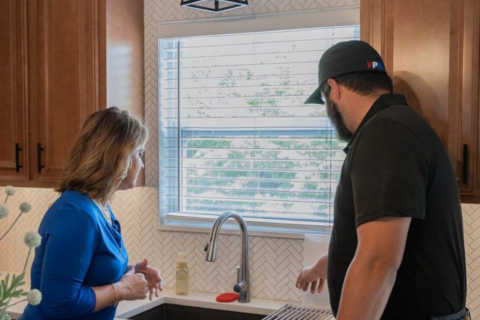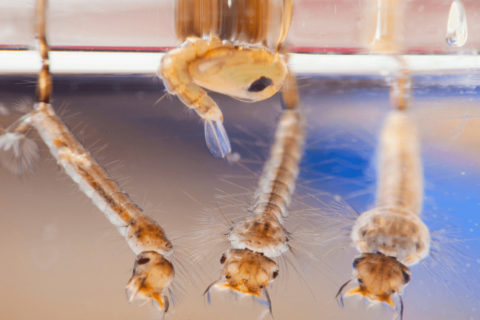Guide to Stinging Insects
Springtime brings warmer weather, flowers, and unfortunately, stinging insects. Don’t let pests ruin your fun! Learn how to identify the most common stinging insects. Remember, it is not advised to attempt to remove a nest on your own. Doing so can be very dangerous, especially if you have allergies.
Bumblebees
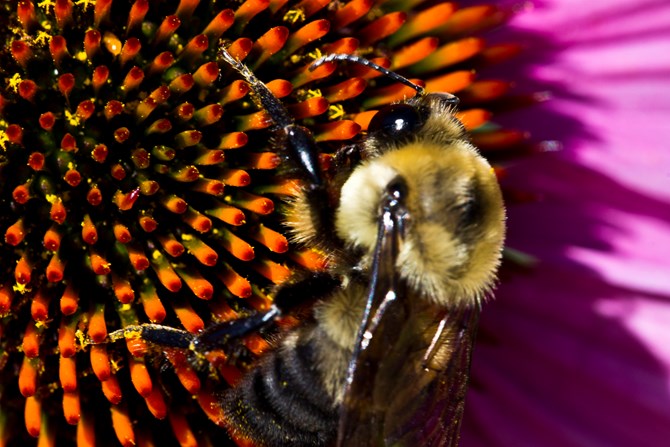
- Bumblebees are yellow and black, appear fuzzy, and are between 1/4 – 1 inch in size.
- Although considered beneficial because they pollinate flowers, they can still sting.
- Nests are made out of pollen clumps, usually in the ground.
Carpenter Bees
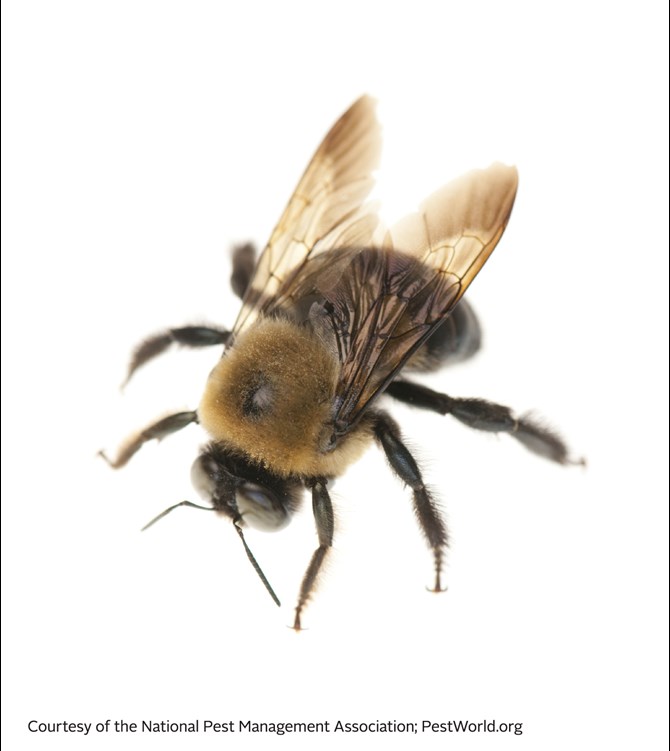
- Carpenter bees resemble bumblebees, but with a mostly bare and shiny abdomen. They are between 1/2 – 1 inch in size.
- Instead of nests, they bore into wood, where they reproduce.
- Carpenter bees can cause structural damage over time.
- Males have no stringer and females rarely sting.
Honeybees

- Honeybees are orangish brown to black, between 1/2 – 5/8 inch in size
- Honeybees are a social insect. They are not aggressive, but will sting defensively to protect the colony.
Baldfaced Hornets
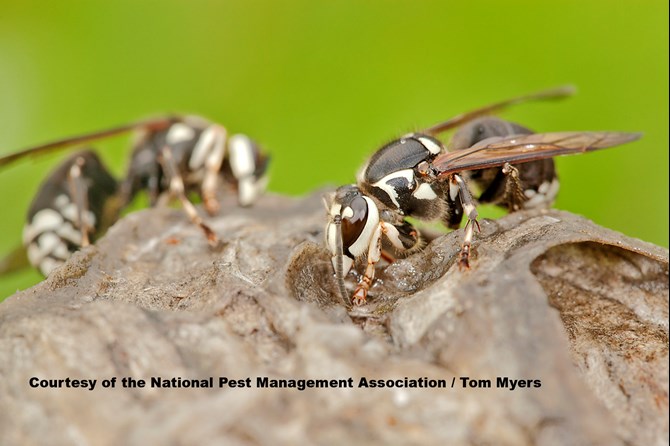
- Baldfaced hornets are mainly black with a mostly white face.
- Nests are usually in exposed locations made out of paper cartons.
European Hornets
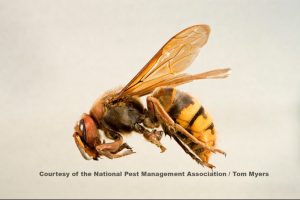
- European hornets can be found across southern Missouri, roughly south of Interstate Highway 44
- They are brown with yellow stripes on the abdomen and range from ¾ inch to over 1 inch.
- Nests can typically be found in places like hollow trees, barns, hollow walls of houses, and attics.
Mud Daubers
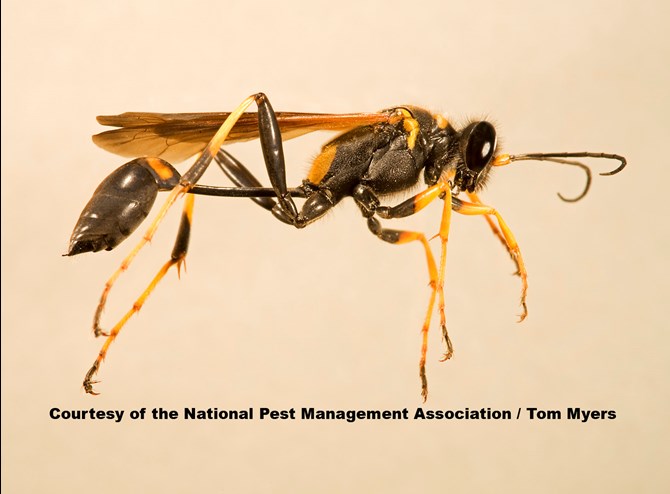
- Mud Daubers are long, skinny, often black and may have slight markings or a metallic luster.
- They are solitary wasps with the females making nests out of mud.
- Mud daubers often build nests near porch ceilings, inside garages and sheds, and protected building walls and attics.
Velvet Ants
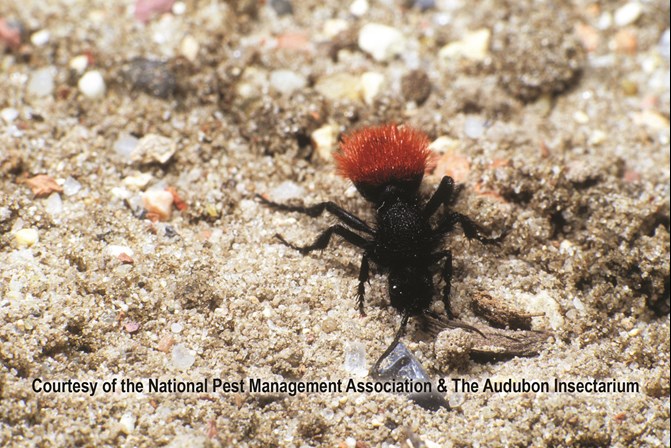
- Velvet ants are actually a type of wasp. Females are wingless, black and very hairy, but sometimes have areas of red, orange, yellow, or white. Males are duller in color, are less hairy, and do have wings.
- They usually live in types of nests used by wasps and ground-nesting bees, but will also create nests in soil.
- Only females have stingers
Paper Wasps
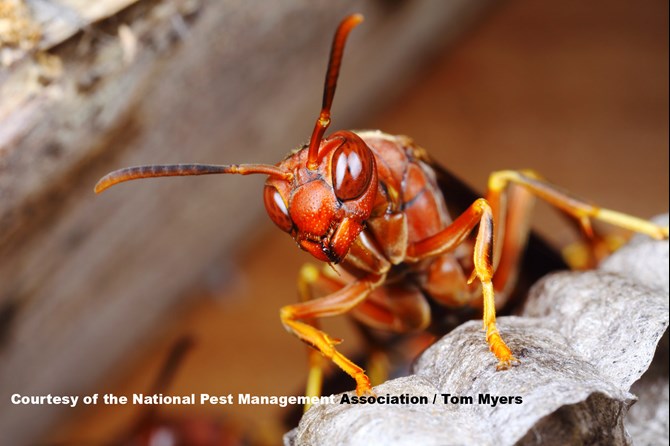
- Paper wasps are a brownish color with yellow or reddish markings.
- They build umbrella-shaped nests from paper-like material. Nests are often found hanging from tree branches as well as porch ceilings, door frames, etc.
- Typically not aggressive, you will likely get stung if you touch a nest.
Yellowjackets
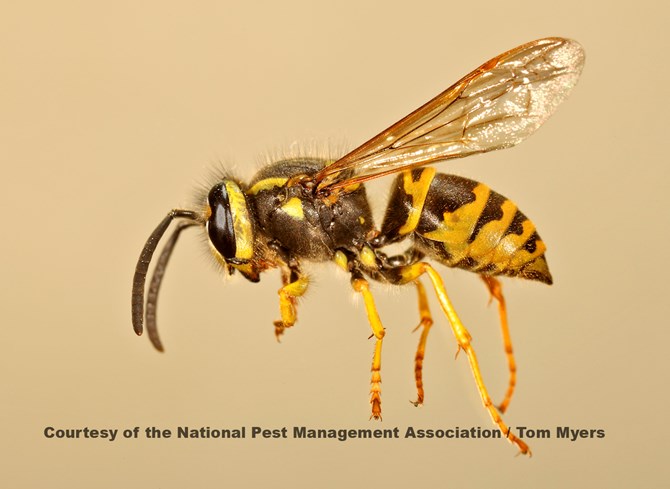
- Yellowjackets are covered in a yellow and black pattern are range from ⅜ inch to ⅝ inch.
- They live in nests made from paper carton and can be as large as a basketball. Nests may be near the ground or can be found hanging from bushes, houses, etc.
- Yellowjackets are not quick to sting unless their nest is threatened.
If you have an issue with any of these around your home, please contact us at 314-601-1789.
Photos from Pestworld.org

